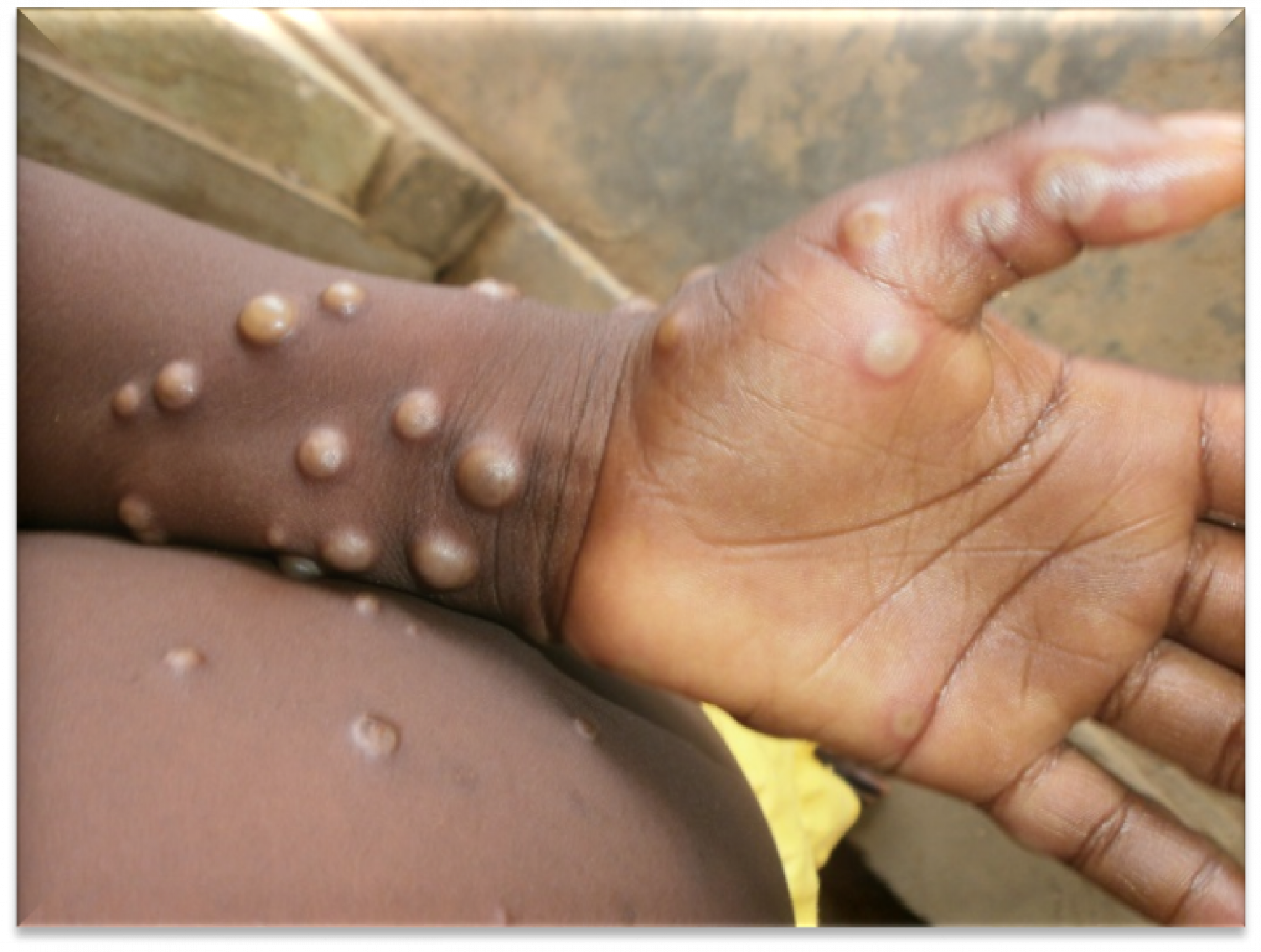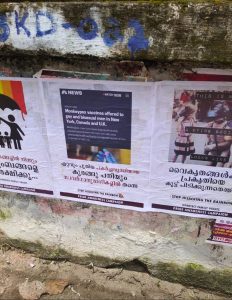While the WHO has noted that most of the cases currently have been in gay and bisexual men, it has clarified that the illness is not limited to them and has warned against discrimination.
Published Jul 26, 2022 | 3:30 PM ⚊ Updated Jul 29, 2022 | 1:41 PM

Rashes on the hand of a person with Monkeypox (WHO/Nigeria Centre for Disease Control)
Gay and bisexual men not just in India but across the world are bracing for the way some people are turning Monkypox into a stigma for them.
And for those who have lived through the times when AIDS and HIV were running rampant even a couple of decades ago were equated to this lifestyle, it is bringing back horrifying flashbacks.
Just a day after the WHO declared Monkeypox a global public health emergency, posters holding gay and bisexual people responsible for the spread of the disease surfaced in the Alappuzha town of Kerala, raising concerns about homophobia in India, too.
Queer activists fear that gay and bisexual men would be stigmatised because of Monkeypox.
“Poster campaigns like these adversely affect the lives of the queer community in the state. Most diseases in the world are spread among heterosexuals. Do we call them a heterosexual disease?” asked Muhammed Unais, a guest lecturer in a government school in Kulathupuzha in the Kollam District in Kerala, and one of the few openly gay Muslim men in the state.

Posters in Alappuzha town in Kerala holding gay and bisexual men responsible for Monkeypox spread (Supplied)
Rachana Mudraboyina, an LGBTQ activist from Hyderabad, claimed that such homophobic posters would affect working-class queer people the most.
Speaking to South First, equal-rights activist Harish Iyer said, “Half-baked narratives from anyone — be it health professionals, agencies, or others — can be interpreted in various ways.”
He added: “The WHO has to release separate advisories now, clarifying that it is not a gay disease. It has to educate people. It is the one that started the fire.”
In his statement on 23 July declaring Monkeypox a global health emergency, WHO Director-General Tedros Adhanom Ghebreyesus noted: “For the moment this is an outbreak that is concentrated among men who have sex with men. That means that this is an outbreak that can be stopped with the right strategies in the right groups.”
Stigma and discrimination can be as dangerous as any virus. I am calling on civil society organizations, including those with experience in working with people living with HIV, to work with us to fight stigma and discrimination associated with this #monkeypox outbreak.
— Tedros Adhanom Ghebreyesus (@DrTedros) July 23, 2022
Dr Sanjay Rao, an infectious disease expert at the SHRC Hospital in Bengaluru, told South First that stigma can have real consequences.
He explained that infected people who do not want to disclose their sexual orientation or sex lives may not report their symptoms, and that could make it harder to trace new cases and control the spread of the disease.
Public health expert and renowned epidemiologist Dr Giridhara R Babu noted that the virus could affect anyone.
“Any human being with skin is at risk. It is the close contact with skin lesions that is most risky, followed by exposure for a longer time in closed spaces (through the respiratory route),” he explained.
Meanwhile, a paper in the New England Journal of Medicine analysed Monkeypox cases in 16 countries between April and June and found that 98 percent of them were in gay and bisexual men, a figure that WHO Monkeypox expert Dr Rosamund Lewis also mentioned.
But even the world health body earlier clarified that the risk of Monkeypox was “not limited to sexually active people or men who have sex with men.”
“Anyone who has close contact with someone who has symptoms is at risk,” a WHO Q&A explained.
Rose Venkatesan, a transgender celebrity and LGBTQ activist, said governments should put up posters in clinics and other important places clearly stating that it should not be considered a gay disease.
Meanwhile, calling the Kerala posters an attempt to malign queer communities, gay rights activists said stigma was the first symptom that a community was possibly going to face violence.
Giving an example, Rose said that many slandered LGBTQ+ people after the recent Pride March that happened in Chennai. They even called it a disease, an international agenda against Indian people, Rose added.
Older LGBTQ people fear that misinformation and rumours can lead to ostracisation of the community, as had happened during the HIV outbreak in the 1980s.
“Today, we are seeing posters. Tomorrow, gay men could be hunted down and beaten up. This is what happened during the HIV days. I know of a person whose house was torched after people came to know that he was HIV-positive. It is important to take note of these incidents and take stringent action against such miscreants or any kind of outfit spreading rumours or putting up posters,” Rose added.
Harish concurred, and added, “We have come a long way. Older queer people have faced the horrors of stigmatisation because of misinformation about HIV. We have learned from this that the only way to bring down the stigma is to up the ante on awareness.”
Akkai Padmasali, a gay-rights activist from Karnataka, said there was very little information about the disease amongst the queer community, and even in others.
Harish said people within the community need to be made aware of the possibilities of Monkeypox transmission and how any close contact — not just in gay communities — can spread the disease from an infected person.
Fear has already set in among gay and bisexual men, he added.
“Recently, someone called me and freaked out that he had Monkeypox. It finally turned out to be just a small pimple. So, this fear can play out in various ways,” he added.
